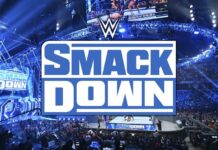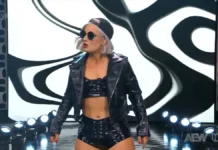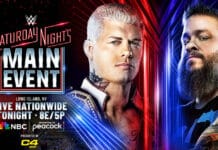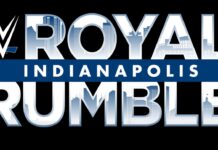There was a point in time when the house show business, the non-televised arena matches, was the main revenue source for the professional wrestling industry. As you can watch now with the easy access of the WWE Network, the majority of the territory system of the 80s used their TV to showcase the stars and run angles that would entice the home audience to buy a ticket to see the grapplers square off live in the arena. Granted, there were some exceptions based on the size and nature of the territory. Bill Watts’ Mid-South group covered several states, running his crew ragged, but he emphasized a much more competitive TV product to keep the promotion steaming along so that fans outside of that night’s particular touring schedule would still be prompted to follow the product. Showing clips from a previous week’s house show didn’t cannibalize market, but rather allowed fans to keep up with the story. The fact that Watt’s had a territory and a roster that was already selling tickets at the time allowed him the flexibility to do that. On the flip side, other groups took the traditional approach and it worked for them. The WWF specifically for most of its run through the 80s, kept to the house show model. Nobody expected Tiger Chug Lee to get the win over Paul Orndorff, but Mr. Wonderful’s promo about his upcoming battle with Jimmy Snuka prompted fans to go to the box office for the house show where the two would square off. Some territories had more of a featured match to wrap up the main event spot of their TV program where two stars might be schedule for a match.
As is the case with the entire business, the TV aspect, as well as the revenue streams within the industry have evolved. Unfortunately, the house show business has eroded, both in drawing power and importance, over the past two decades since the end of the Monday Night Wars, which is the last time it was relevant. When the professional wrestling genre was a part of pop culture, just putting the letters WCW or WWF on the marquee was enough to sell tickets. The popularity of the brands and the overall star power of the organizations were enough to generate sell outs before a full card was announced. Just the fact that Steve Austin, Goldberg, Sting, DX, etc. were going to be in the building was enough of a reason that people wanted to be there. Fans wanted to see their favorite stars in-person and it didn’t matter if the show was seen on television or not. The big angles were hot-shot on TV every week, but the overall star power of the national spotlight to record-setting ratings made the live event experience something that fans were willing to pay to get admission in the arena.
Without the wave of pop culture to fuel those house shows, and almost as important, the fact that television content fuels the current WWE business model more than anything else, non-televised events are viewed as inconsequential by event the most causal WWE fan. The notion that “if it doesn’t happen on TV then it didn’t happen” is probably more pertinent now than any other time in history. The WWE’s biggest and most profitable revenue stream is their mega TV deals with Fox and USA. The company secured those deals because of its ability to deliver a consistent number for the networks. Obviously, the pandemic era has shifted those ratings, but that’s another discussion for another time. The point being, the televised content, both for Fox and USA, as well as the content that fuels the WWE Network, another barometer of success, are the most important assets to the company.
We can debate and determine valid objections for the possibility that too many hours or content dilute the product and saturate the market, but the fact remains those hours of TV that the WWE machine churns out every weeks are part of the reason why the organization is on the stock market and worth nearly a billion dollars. Quite frankly, what happened at the Smackdown house show in front of a few thousand fans in Des Moines, Iowa doesn’t matter in the grand scheme of things. (No disrespect intended to Des Moines.)
So, will there be house shows in the future?
The Wrestling Observer’s Dave Meltzer reported that there were a few more released within the WWE, including Tony Chimel, known of his ring announcing, but worked more recently in the live event side of the organization. Side note about Chimel, when I was at a house show when I was 11, I saw him at intermission and asked for an autograph when he was standing next to the sound equipment. He said, “not right now” and perhaps the news of his release will end a nearly 20-year grudge. On a more serious note, Chimel’s release isn’t that surprising because the WWE hasn’t toured for most of the year and its still unknown when they will be back on the road, but considering that the house shows weren’t profitable before the pandemic, is there really a reason to bring back the non-televised schedule?
Some wrestlers have discussed that the house show tours can sometimes be more fun to work without the pressure and time constants of live television, but with as many injuries as there are now, it might be a better option to reduce the bumps the rosters takes as well as cutting down on their travel. Considering the lack of revenue, the extra travel, and the fact that televised content is the fuel of the WWE machine, it makes sense to cut down the house shows schedule to maybe a dozen or so key events a year in major locations. When you add that potential US schedule to the European tour, two dozen house show events a year might be a more realistic option to the current landscape of the industry. The only potential downside of that is the performers on the roster that need the experience of working in front of a live crowd, but considering the independent groups WWE has working agreements with it would seem at least possible they could be some type of deal that would allow newer members of the roster to get more experience in front of a live crowd. Don’t get me wrong, there was something special about attending a house show and knowing that only those there were there in-person got to see the action. I was at an event in 1997 that my parents surprised me with tickets for when I got home from elementary school and Mick Foley pelted Savio Vega with a giant bag of pop corn. But, the same way that the internet made most wrestling magazines an antiquated concept, the climate of the television industry might lead to the conclusion of house shows for the company.
What do you think? Comment below with your thoughts, opinions, feedback and anything else that was raised.
Until next week
-Jim LaMotta
E mail [email protected] | You can follow me on Twitter @jimlamotta







